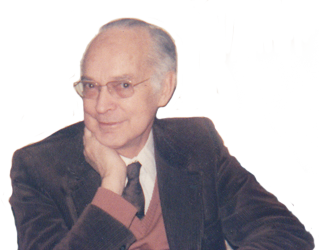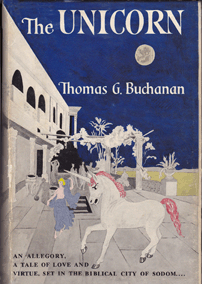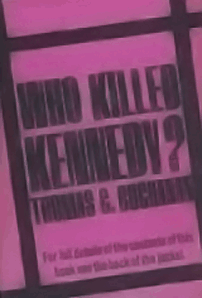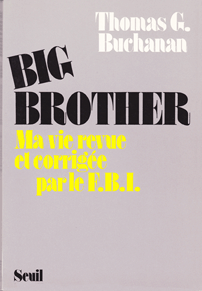Thomas Gittings Buchanan Jr. was born on March 14th, 1919, in Baltimore, Maryland. His father was Thomas Gittings Buchanan Sr. His mother was Ellen Gilmor, daughter of Judge Robert Gilmor.
Education
Young Tom Buchanan started his formal education when he was 5 years old, on the occasion of a visit to Paris, France, with his mother. He attended the Lycée Montaigne, which was, at that time, still open to the elementary grades.
Upon returning to the United States, he was homeschooled through the Calvert program until he attended the brick-and-mortar Calvert School in Baltimore, entering the 4th grade while still a year younger than his classmates.
As Calvert School classes extended only to grade 6 at that time, Tom skipped another grade to attend Lawrenceville after leaving Calvert. Despite being two or three years younger than his classmates, Tom was almost always first of his class. At the end of the final grade, he was ranked first of all the school.
Tom Buchanan obtained a scholarship to attend Yale University, and performed excellently, but he left after the first year, in protest against the firing of a professor accused of having helped to organize a union.
After a second year of higher learning, this time at George Washington University, Thomas G. Buchanan left university and was hired by the Washington Evening Star.
Military Service
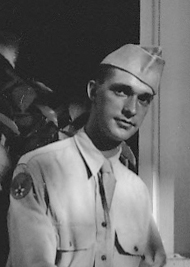
In 1942, soon after Buchanan was promoted to be a reporter, he was drafted into the military to serve in World War II. Recruited as a private, he trained first in aviation and artillery. As more officers were needed, he was among those who were given the Army General Classification Test (ACGT) to determine if they were officer material. Buchanan received an I.Q. score of 145 and was chosen to receive officer training. After the Allied landing in Normandy, Buchanan saw combat in the North of France as commanding captain of an anti-aircraft battery, for which he received a Battle Star. He remained in France until 1946, in Rennes, Chartres, and Le Havre, where he was in command of a re-embarkation center.
Career
Buchanan’s job at the Washington Evening Star was waiting for him when he returned from the war, and his editor continued to be pleased with his work. In 1948, however, a week before the birth of his first child, he became the first journalist in the U.S. to be fired explicitly for his communist views and membership in the American Communist Party. The case was significant for the American Newspaper Guild, and was reported in Time Magazine.
Buchanan worked for a while as the https://www.flickr.com/photos/washington_area_spark/8534825980/. This earned him being tabbed as a “key figure” by the F.B.I. He was forced to seek a new source of income when the Civil Rights Congress’s funds became insufficient to continue paying his salary.
Being now blacklisted, Buchanan could no longer find work as a journalist in the United States. However, he continued to serve as political correspondent for more than twenty magazines in Europe and Asia.
He survived for a time on his earnings at the horse races, as he had designed, and implemented with increasing refinements, an algorithm for predicting the most probable winner based on as many factors as could be quantified (terrain, weather, age, weight, prior performance, etc.) modified by a risk-management factor.
He then worked at a couple of jobs requiring none of his writing skills and very little of his mathematical skills (calculating cost estimates for a construction company, then tallying inventory for a wholesale warehousing service) but was unable to keep either. In the case of the first of these two jobs, the F.B.I. again interfered by denouncing him to his employer, making good on their threat to do so if he did not cooperate in naming names. The employer at the second of these jobs laid him off allegedly because of downsizing. According to the F.B.I. files, Buchanan was chosen as the one to be let go because the employer felt he was more interested in writing his book than in working for the company.
Buchanan was indeed, at that time, continuing to work on his own creative writing. His first novel, The Unicorn, was first published in France in 1959 as La licorne (translated by France Vincent McCune) and then in the U.S., Canada, and Germany in 1960. It was on the New York Times list of Best Books of 1960.
Buchanan’s last employment in the United States was as a computer engineer (programmer). In those days, computers were not portable, they filled entire rooms. When the company was about to get a new model of computer, training for it required that he visit another facility that had the same model while they waited for theirs. Because the facility conducted work for the Pentagon, there would be a security clearance check — routine for anyone not involved in what was considered to be “subversive” affiliations, but it would spell the end of yet another job for a communist, even though he had by that time left the Communist Party.
Buchanan moved to France in 1961 and worked as a computer programmer for a number of companies over the years, starting with Le Matériel Téléphonique (part of ITT). For Air France, he helped computerize the seat reservation system in the early ’60s. He was head of the programming department for the General Organization Company when it was tasked with setting up a computerized system for maintaining the accounting records of the city of Paris. He also worked for a time in programming for l’Assistance Publique, which is the public hospital system of Paris and its suburbs. At one point he did a stint working at a friend’s new IT firm, but it didn’t survive the start-up years.
One job that involved a computer-programmer’s skills but didn’t include a computer, was at the French horse-racing newspaper, Week End. Buchanan’s job was to apply his horse-racing algorithm to allow the paper to publish predictions of who would win the races. He requested an actual computer to turn the algorithm into software and automate the system, but was only given a pool of young workers to help collect and organize the data.
During all this time, he continued to work as a freelance writer as well, sometimes earning his living exclusively from his writing.
About a month after John F. Kennedy was assassinated in 1963, Buchanan started writing an analysis of the inconsistencies in the media reports about it. A friend showed his report to the editors of the French weekly, l’Express, who then published parts of it as a series of six articles and assigned Buchanan to go to Dallas to cover the Jack Ruby trial in real time. The full report was then published in book form as Les Assassins de Kennedy in France, Who Killed Kennedy? in the U.K., and translated for foreign editions in 19 countries. It was only later that the book was published in the U.S. Coming as it did after the Warren Commission’s Report was released, the American edition of Who Killed Kennedy? contained revisions based on what had come to light since the first publication, and additions such as a commentary on the Warren Report.
Buchanan’s final published book was Big Brother – Ma vie revue et corrigée par le F.B.I. (Big Brother – My life reviewed and revised by the F.B.I.). Released in 1984, it recounts the F.B.I.’s surveillance of him during the late 1940s, the McCarthy era and beyond, based on his own memories and the F.B.I. files he obtained in 1983 through the Freedom of Information Act.
Politics
Buchanan first embraced communist ideals at age 12 after reading Men Like Gods by H. G. Wells. As an adult, he joined the American Communist Party, but left it in 1956 when he felt the party failed to integrate the lessons learned from Krushchev’s report on Stalin’s crimes. He continued to believe in Marxist ideals his whole life.
Interests
Tom Buchanan enjoyed playing tennis and bridge, and tending his vegetable garden. He listened to horse races and baseball games on the radio, and opera, symphonies, and musicals on the phonograph. His favorite authors included John Steinbeck, George Bernard Shaw, H. G. Wells, and Simone de Beauvoir. He was also fond of Winnie-the-Pooh and The Wind in the Willows, and laughed heartily when listening to Alice’s Restaurant. He enjoyed and dispensed black humor and intellectual wit, sometimes a bit above the ken of his intended audience. His favorite color was purple.
Family
Tom Buchanan married his first wife in 1941. She and their 5 children joined him in France in 1963. He met his second wife a few years later and they remained together until his death. He died in Paris in 1988, of multiple myeloma.
His daughter, Marian Buchanan, has designed and maintains this website on behalf of the family. It is the official site for accurate information on Thomas G. Buchanan Jr., his life, and his works.
